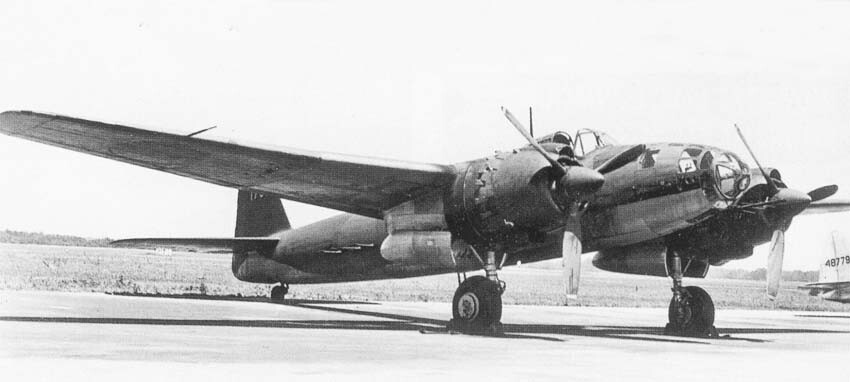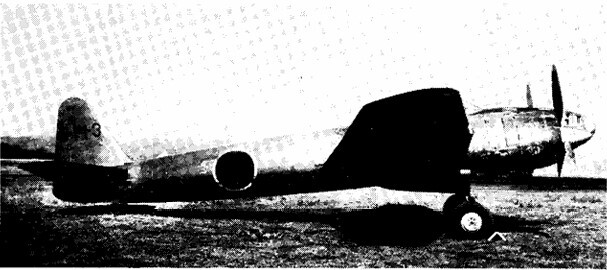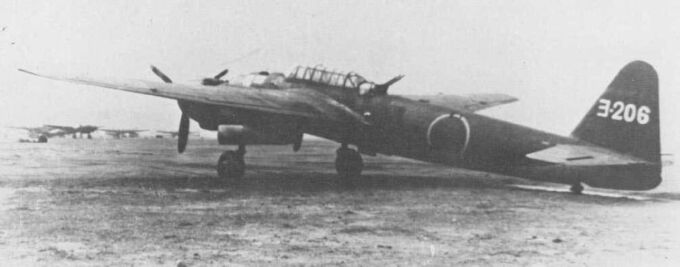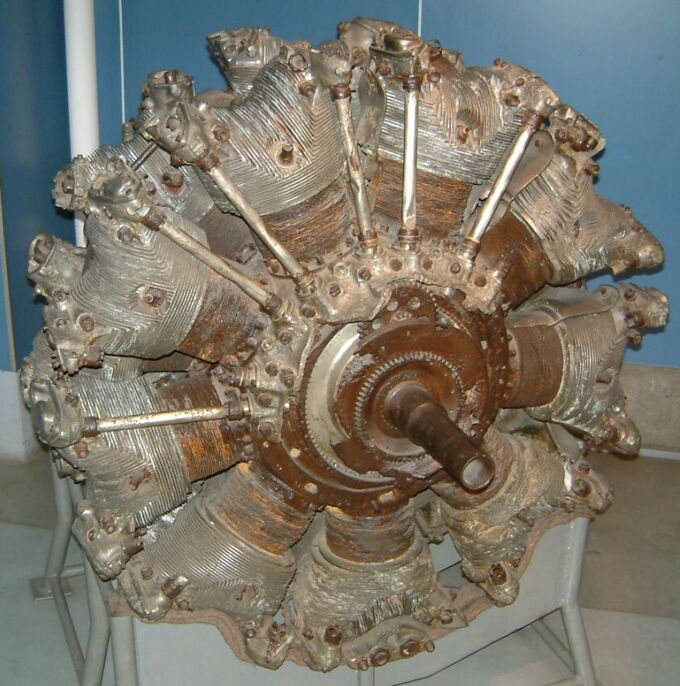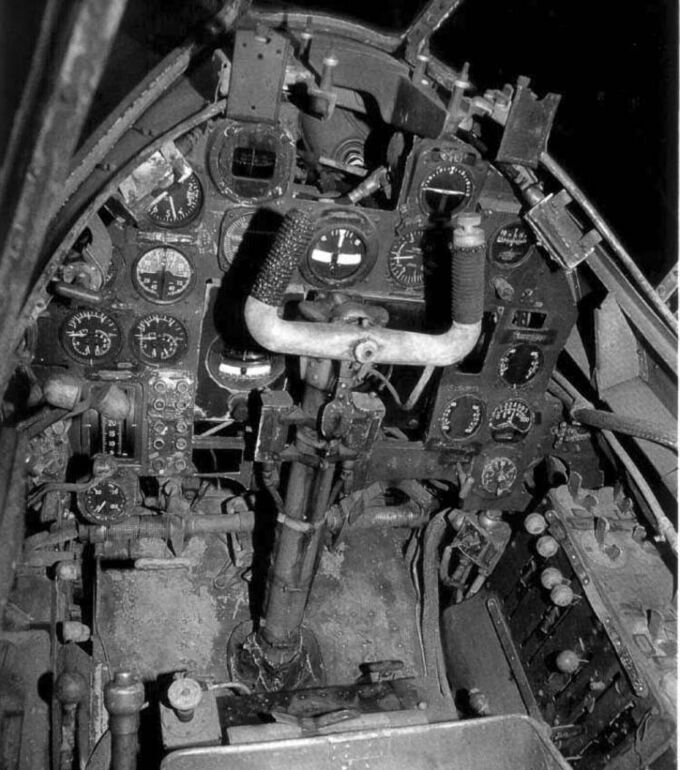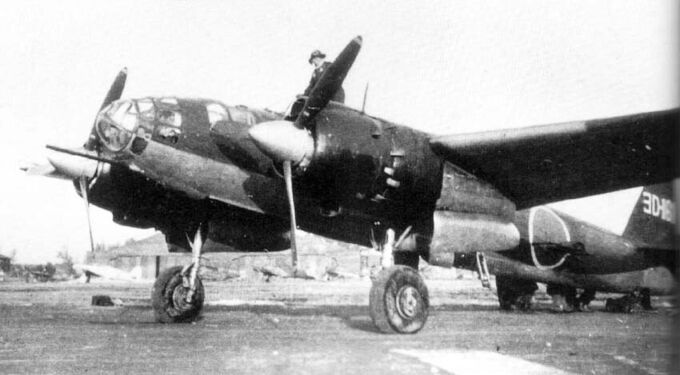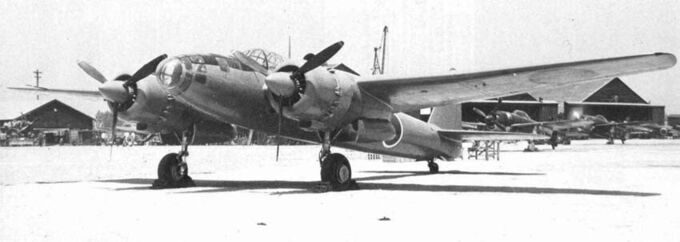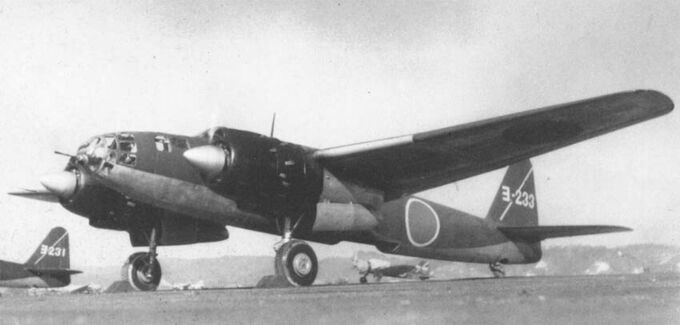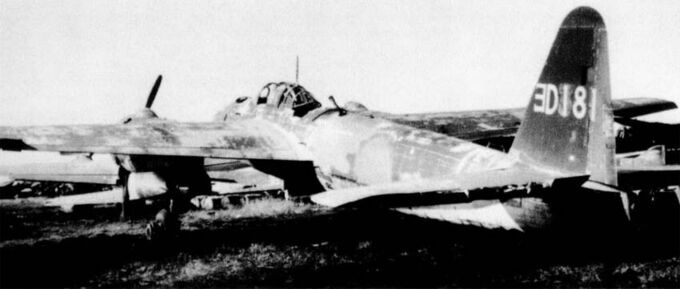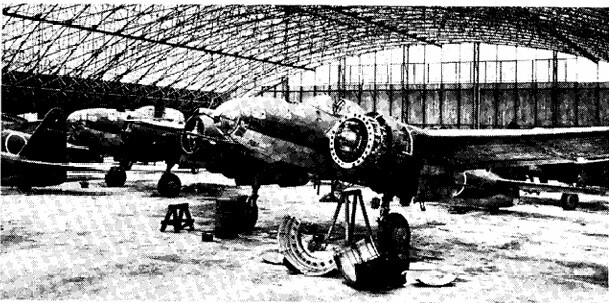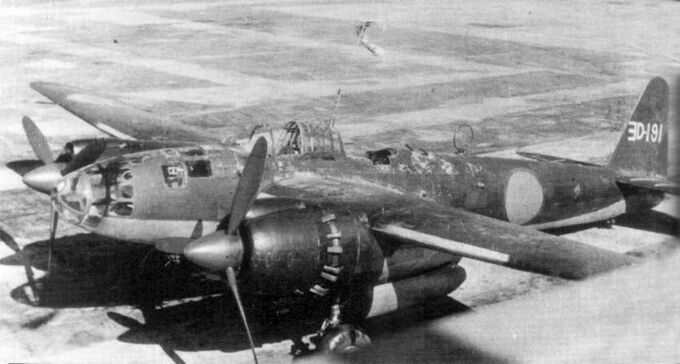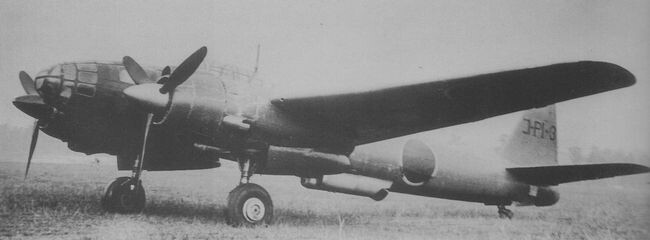For most of the major powers during World War II, fast twin-engine medium bombers were essential assets. Japan, however, did not field a comparable aircraft until 1944. That year, the Japanese Army introduced the Ki-67 Hiryū, while the Navy received the P1Y1 Ginga (Milky Way). The Ginga prototype first flew in the summer of 1943, and confidence in its design was so high that Nakajima, the primary manufacturer, bypassed extended testing and moved straight to mass production. By the end of 1943, 45 units were delivered, and production ramped up steadily, reaching 453 aircraft by October 1944, when the Navy officially accepted the design. However, the Ginga faced significant reliability and maintenance issues, leaving many aircraft unfit for operational use initially.
Development
The P1Y series development began in 1940, initiated by the Dai-Ichi Kaigun Kōkū Gijutsusho (First Naval Air Technical Arsenal) in response to a 15-Shi specification. This specification called for a fast bomber capable of low-altitude operations, torpedo attacks, and dive-bombing, comparable to the Junkers Ju 88, North American B-25 Mitchell, and Martin B-26 Marauder.
Led by engineers Tadanao Mitsuzi and Masao Yamana, the team designed a sleek, twin-engine aircraft with a narrow, circular fuselage and mid-mounted wings.
Engines and fuel
The aircraft was powered by the Nakajima Homare, an 18-cylinder air-cooled radial engine still in development at the time. With two engines producing 1,820 horsepower each, the P1Y was expected to achieve a top speed of over 300 knots (345 mph).
Despite its compact size, it had extensive fuel capacity, with 14 tanks totaling 5,535 liters (1,218 imperial gallons) and the option to add two 220-liter (48 imperial gallon) drop tanks. Two oil tanks were also mounted in each engine nacelle.
Armor and loadout
Armor protection was minimal, limited to a 20 mm plate behind the pilot’s seat. Defensive armament consisted of only two flexibly mounted guns, one in the nose and one in the rear cockpit, leaving the aircraft heavily reliant on speed to evade interception. Its offensive payload included either a single 800 kg (1,764 lb) torpedo or two 500 kg (1,102 lb) bombs.
First P1Y1 prototype completed
Initially designated as the Y-20, the aircraft’s detailed design progressed at the Dai-Ichi Kaigun Kōkū Gijutsusho. The Navy decided to assign its production to Nakajima’s Koizumi plant, which had recently completed manufacturing the Navy G3M Type 96 Attack Bomber Model 23. In early 1943, the last G3M3 bombers rolled out, and the production lines were retooled for the P1Y.
The first prototype was completed in August 1943 and soon took to the skies. While the Ginga impressed test and service pilots with its speed and handling, ground crews faced numerous challenges, particularly with its hydraulic system and the unreliable Homare engines.
Despite the rapid growth in production, the Japanese Navy delayed the acceptance of the P1Y1 Ginga for over a year due to ongoing maintenance challenges. During this time, several modifications were made to the aircraft.
These changes included replacing the curved windshield with a flat, bullet-proof panel, switching to individual exhaust stacks instead of a single exhaust pipe, and using flat-headed rivets instead of flush rivets on the fuselage.
Additionally, the production aircraft were powered by the more reliable 1,825 hp Nakajima Homare 12 engines, and a fixed tailwheel was installed instead of the retractable one used on the prototypes.
The defensive armament was also improved. The initial production models featured a flexible 20 mm cannon in the nose, replacing the 7.7 mm machine gun from the prototypes. Over time, the aircraft’s armament was further upgraded, with the 20 mm Type 99 Model 1 cannons in the nose and dorsal positions being replaced by 13 mm Type 2 machine guns, either in single or twin mounts, in later variants (P1Y1a, P1Y1b, and P1Y1c).
Late production aircraft were fitted with air-to-sea search radar, and there were plans to use the Ginga as a parent aircraft for the Ohka Model 22 suicide aircraft.
First time in service
Finally, in 1945, the Navy officially accepted the Ginga into service, now designated the Navy Bomber Ginga Model 11. However, the ongoing engine reliability issues, particularly with the Homare 12 engines that rarely performed at full power, delayed the aircraft’s combat debut until early spring 1945.
When the Ginga was finally deployed in combat, it lived up to the Navy’s high expectations. Despite being in service for less than six months, the aircraft, known to the Allies as “Frances”, earned a strong reputation and was considered a formidable opponent.
Pilots' first thoughts
During the flight trials of the P1Y1, which had a top speed of 340 mph, naval pilots took notice of its potential for night fighting, especially in response to anticipated Allied night bombing raids over Japan. In response, the Japanese Navy instructed Kawanishi to develop a night fighter variant of the P1Y1 at their Konan plant.
Concerned that production of the Homare engine might not meet all demands, Kawanishi chose to equip the night fighter with a pair of Mitsubishi Kasei 25a fourteen-cylinder radials, each producing 1,850 hp.
Designated P1Y2-S, the night fighter retained the P1Y1's ventral bomb-bay, as it was intended to serve as both a night fighter and a night intruder. The nose gun was removed, and in its place, two 20 mm Type 99 Model 2 cannons were mounted obliquely in the fuselage to fire upwards and forwards. The rear cockpit retained the flexibly mounted 20 mm Type 99 cannon.
First flight P1Y2-S
The first flight of the P1Y2-S occurred in June 1944, and it went into production as the Navy Night Fighter Kyokko (Aurora). However, its performance at altitude proved disappointing. As a result, most of the 96 P1Y2-S units built had the angled guns removed and were repurposed as bombers, redesignated the Navy Bomber Ginga Model 16 (P1Y2).
Another variant, the Navy Night Fighter Byakko (White Light) (P1Y1-S), was developed from the Nakajima-built P1Y1. It featured two pairs of obliquely mounted 20 mm cannons, one forward and one aft of the cockpit. However, this version also proved unsuccessful.
Prototypes and modifications
In the final year of the war, various modifications were made to the P1Y series, including the installation of wooden tail surfaces and rear fuselage sections on a limited number of aircraft. Additionally, experimental testing was conducted with a power-operated dorsal turret, which mounted two 20 mm cannons.
The third prototype of the P1Y1 was used to test-fly the Tsu-11 Campini-type jet engine, which was intended for the Ohka Model 22 series. Another aircraft was tested with ten forward-firing 20 mm cannons, and there were plans for an even more heavily armed version, featuring sixteen 20 mm cannons. There were also considerations for a version of the P1Y1 to be partially built of steel, but this did not come to fruition.
Several upgraded versions of the Ginga, retaining the basic airframe structure, were planned:
- P1Y4 Model 12: Powered by a pair of 2,000 hp Homare 23 radials.
- P1Y5 Model 14: Equipped with two 2,200 hp Mitsubishi MK9A radials.
- P1Y6 Model 17: Intended to be powered by the Kasei 25c radial engine.
The most ambitious variant was the P1Y3 Model 33, which was specially designed to carry the rocket-powered Ohka Model 21 or jet-powered Ohka Model 22 suicide aircraft.
To accommodate this weapon in its bomb-bay, the P1Y3 would have had an enlarged fuselage, and its wingspan would have been increased from 20 meters (65 feet 7 inches) to 22 meters (72 feet 2 inches). However, by the end of the war, the P1Y3, along with the P1Y4, P1Y5, and P1Y6, remained on the drawing board and were never completed.
- https://tvd.im/aviation/2068-yokosuka-p1y1-ginga-frances.html
- https://www.airwar.ru/enc/bww2/p1y.html
- Francillon, René J. Japanese Aircraft of the Pacific War. London: Putnam & Company, 1970 (2nd edition 1979). ISBN 978-0-370-30251-5.
For pictures:
- https://en.wikipedia.org/wiki/Yokosuka_P1Y
- https://www.airwar.ru/enc/bww2/p1y.html
- https://en.wikipedia.org/wiki/Nakajima_Homare
